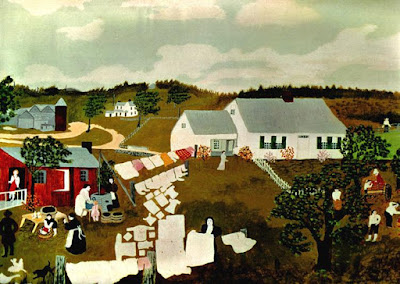You can have it all. You’d just better be prepared to work very hard.
|
Clouds over Teslin Lake, Yukon Territory, by Carol L. Douglas. We did some icy camping here.
|
I recently was rejected from a residency I really wanted, in Gates of the Arctic National Park. (Rejection is how these things roll, so don’t worry about my feelings.) I’ve spent three months doing intensive training to ensure I could backpack my gear in the mountains. While I don’t think they discriminated on the basis of age, I will always wonder if it was a factor. Sixty-year-olds, in conventional wisdom, are not fit enough to climb mountains north of the Arctic Circle.
| This is the northernmost place I’ve ever painted, just a few miles from Gates of the Arctic National Park. |
| Blueberry barrens, Clary Hill, oil on canvas, by Carol L. Douglas. This is at Maine Farmland Trust Gallery until May 24. |
Young readers, you’ll reach not one but many forks in the road. At each juncture, you can choose between security and risk. If you’re not courageous enough to take risks at 20, 30, or 40, when are you going to develop courage?
I have a student right now who is a retired Army officer. She went to art school in her youth but chose a military nursing career. Since retiring, she pours her energies into being the best painter she can be. Because she’s dedicated, she’s succeeding. And I bet it keeps her young long after her peers have subsided into their final rest.
| Blueberry barrens, Clary Hill, watercolor, by Carol L. Douglas. This is at Maine Farmland Trust Gallery until May 24. |






